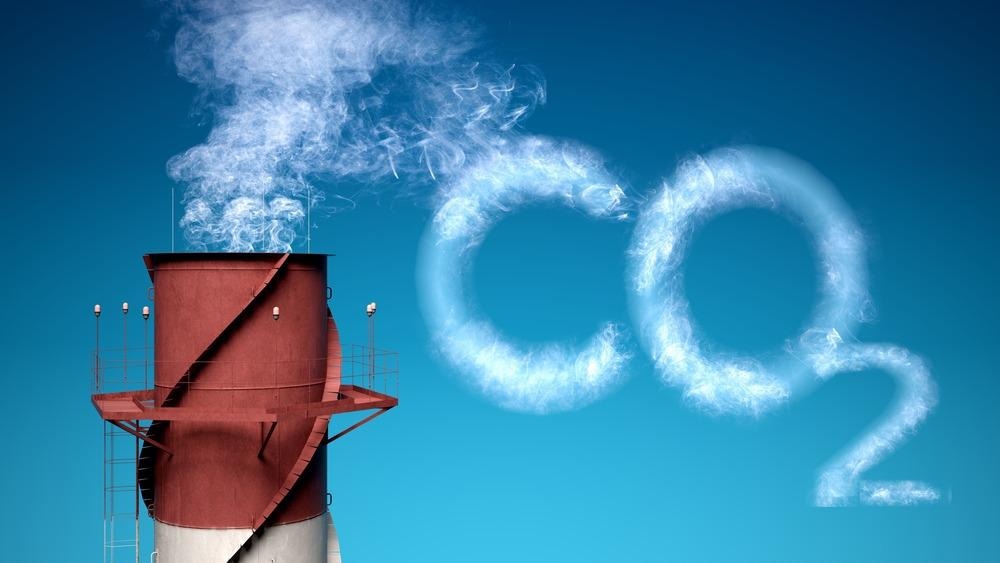In an article published recently in the journal Separation and Purification Technology, graphene oxide (GO)-doped stearate-intercalated layered double oxides (LDO) were presented as a novel form of carbon dioxide (CO2) adsorbers at intermediate temperatures (200-400 °C).

Study: Graphene oxide-doped stearate-intercalated layered double oxide nanocomposites as high-performance CO2 adsorbents. Image Credit: Billion Photos/Shutterstock.com
The Ongoing Struggle to Capture and Store CO2
The release of greenhouse gases like CO2 is among the primary drivers of global warming. Recently, an increasing number of scientists have concentrated their efforts on CO2 collection, usage, and storage.
The sorption-enhanced water-gas shift (SEWGS), a fusion of the water-gas transition process and adsorption of CO2, is regarded as a potential pre-burning CO2 collection mechanism.
Although the process temperature of SEWGS is typically in the 200–400 °C zone, the adsorptive activity of generally employed physical adsorbers such as zeolite and activated carbon is inadequate at elevated temperatures.
The most often used chemical adsorbers including metallic oxides and amine-based solid adsorbents have sluggish dynamics and poor regenerative capability. As a result, endeavors must be undertaken to produce unique and appropriate adsorbent materials under realistic settings.
How can Layered Double Hydroxide Help?
The mineral hydrotalcite is also termed layered double hydroxide (LDH). LDH-based compounds have been shown to be appropriate for the SEWGS process in recent times, and associated research on LDH and its derived products has also been documented in the literature.
Good high-heat calcination might transform LDH to layered double oxide (LDO) nanoscale composites with additional exposed basic spots, considerably improving its adsorptive output.
To increase the adsorptive capability of the LDO composite, adjustments are necessary. Optimizing the Mg-to-Al ratio or inserting carbonates or nitrates of alkali metals may improve the CO2 adsorptive uptakes of hydrotalcite-derived adsorbents.
The greater anion size may result in greater interlayer separation in the LDH precursors, making it simpler for carbon dioxide molecules to migrate into the interlayer area and engage with the active center.
Improving LDH with Graphene Oxide Doping
Graphene is a flat two-dimensional (2D) nanomaterial, and is an ideal substance for environmental solutions.
Graphene oxide (GO) is easily reduced to produce aggregation, resulting in a quick reduction in total area and, as a result, limiting its vast range of uses.
A number of approaches have been used to address flaws in GO-based substances. The two-dimensional flaky shape of GO may be morphologically suitable with the LDH, and the presence of GO may promote the particle dispersal of the LDH.
The results of studies on GO/LDH nanocomposites have shown that such substances have several possible uses in treating wastewater, ecological monitors, catalysts, adsorption, and extraction.
It was observed that injecting LDH with a tiny quantity of GO might enhance adsorptive efficiency, owing to a reduction in LDH particle diameter and a rise in the number of basic adsorptive spots.
To enhance its adsorption capability, the LDH must be further modified.
Important Findings of the Study
In this study, the impacts of introducing GO as a supporting agent and stearate intercalation in LDO on the CO2 adsorbing ability of the nanoscale composites were investigated.
The increased CO2 adsorptive output of the LDO adsorbent following stearate intercalation could be attributed to the dissolution of long carbon chain anions, which induced the plate-shaped LDO-SA to divide and produce further exposed basic spots; due to the blended metallic oxide achieved after calcination which demonstrated fairly low crystallinity; and due to the created pseudo-amorphous framework, which proved more stable than LDO.
Furthermore, GO loading increased CO2 adsorptive output and regenerative capabilities of the nanocomposite, which may be ascribed to increases in adsorber dispersion and durability.
Amongst all the specimens, 6GO-LDO-SA had the greatest carbon dioxide adsorption uptake, and it was more than twice as great as the unaltered LDO specimen.
The characterization findings showed that specific areas and basic spots were the most important elements impacting the nanocomposite's CO2 adsorption capability.
The kinematic study findings showed that chemical adsorption monopolized CO2 adsorption on the GO-LDO-SA composite, and the adsorbed carbon dioxide was mostly retained as carbonate.
After ten cycles of adsorption and desorption testing, the 6GO-LDO-SA specimen could still retain a strong regenerative efficacy (88 %), which would be encouraging in its practical use.
Reference
Wu, K., Ye, Q., Wang, L., Meng, F., & Dai, H. (2022). Graphene oxide-doped stearate-intercalated layered double oxide nanocomposites as high-performance CO2 adsorbents. Separation and Purification Technology. Available at: https://www.sciencedirect.com/science/article/pii/S1383586622002465?via%3Dihub
Disclaimer: The views expressed here are those of the author expressed in their private capacity and do not necessarily represent the views of AZoM.com Limited T/A AZoNetwork the owner and operator of this website. This disclaimer forms part of the Terms and conditions of use of this website.